Rahul Biswas
Understanding the Effects of Noise in Text-to-SQL: An Examination of the BIRD-Bench Benchmark
Feb 20, 2024Abstract:Text-to-SQL, which involves translating natural language into Structured Query Language (SQL), is crucial for enabling broad access to structured databases without expert knowledge. However, designing models for such tasks is challenging due to numerous factors, including the presence of 'noise,' such as ambiguous questions and syntactical errors. This study provides an in-depth analysis of the distribution and types of noise in the widely used BIRD-Bench benchmark and the impact of noise on models. While BIRD-Bench was created to model dirty and noisy database values, it was not created to contain noise and errors in the questions and gold queries. We found that noise in questions and gold queries are prevalent in the dataset, with varying amounts across domains, and with an uneven distribution between noise types. The presence of incorrect gold SQL queries, which then generate incorrect gold answers, has a significant impact on the benchmark's reliability. Surprisingly, when evaluating models on corrected SQL queries, zero-shot baselines surpassed the performance of state-of-the-art prompting methods. We conclude that informative noise labels and reliable benchmarks are crucial to developing new Text-to-SQL methods that can handle varying types of noise.
Enabling real-time multi-messenger astrophysics discoveries with deep learning
Nov 26, 2019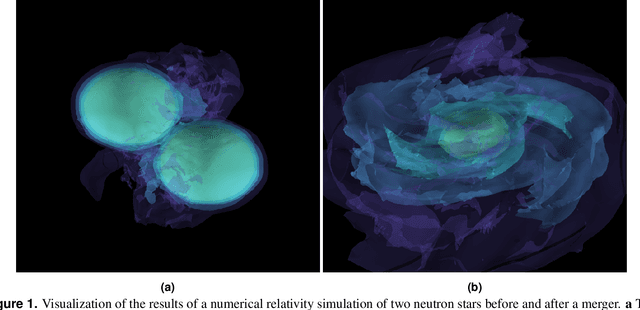
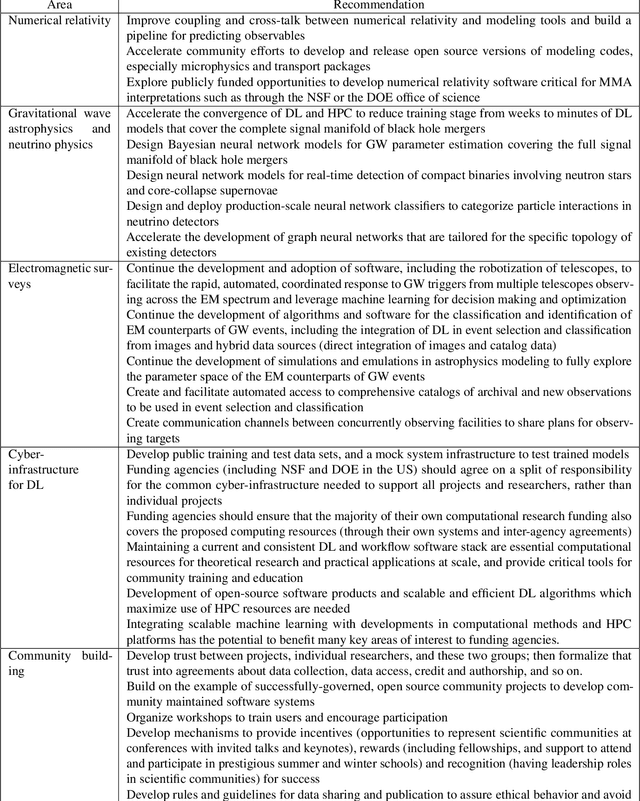
Abstract:Multi-messenger astrophysics is a fast-growing, interdisciplinary field that combines data, which vary in volume and speed of data processing, from many different instruments that probe the Universe using different cosmic messengers: electromagnetic waves, cosmic rays, gravitational waves and neutrinos. In this Expert Recommendation, we review the key challenges of real-time observations of gravitational wave sources and their electromagnetic and astroparticle counterparts, and make a number of recommendations to maximize their potential for scientific discovery. These recommendations refer to the design of scalable and computationally efficient machine learning algorithms; the cyber-infrastructure to numerically simulate astrophysical sources, and to process and interpret multi-messenger astrophysics data; the management of gravitational wave detections to trigger real-time alerts for electromagnetic and astroparticle follow-ups; a vision to harness future developments of machine learning and cyber-infrastructure resources to cope with the big-data requirements; and the need to build a community of experts to realize the goals of multi-messenger astrophysics.
* Invited Expert Recommendation for Nature Reviews Physics. The art work produced by E. A. Huerta and Shawn Rosofsky for this article was used by Carl Conway to design the cover of the October 2019 issue of Nature Reviews Physics
RAPID: Early Classification of Explosive Transients using Deep Learning
Mar 29, 2019
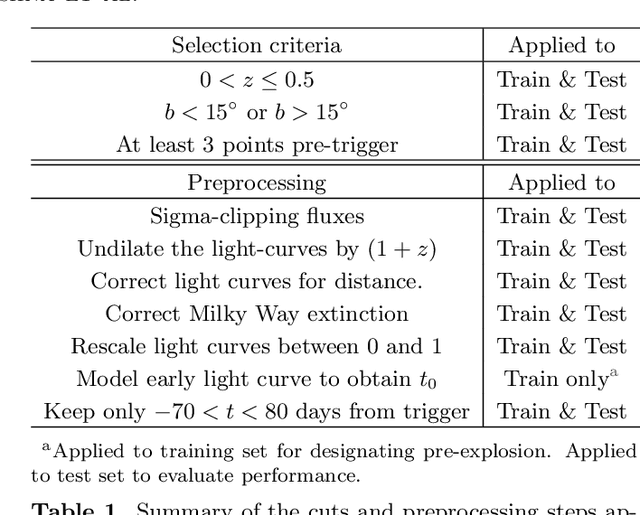
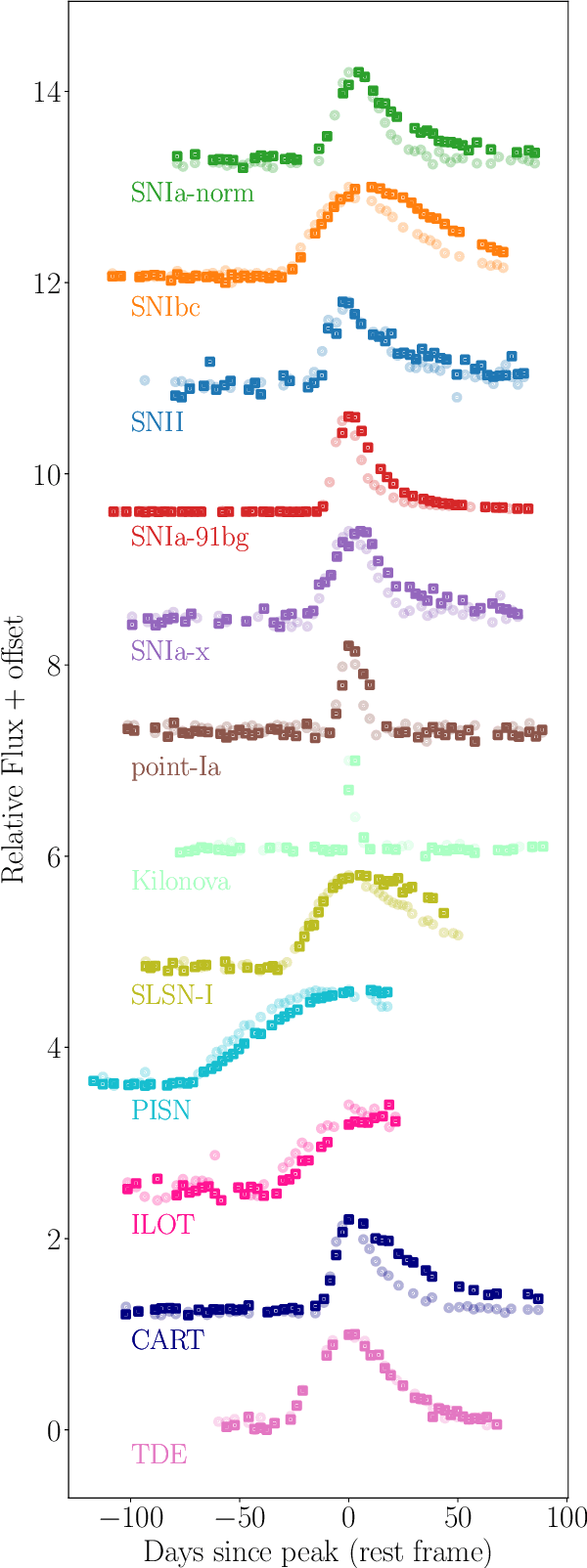
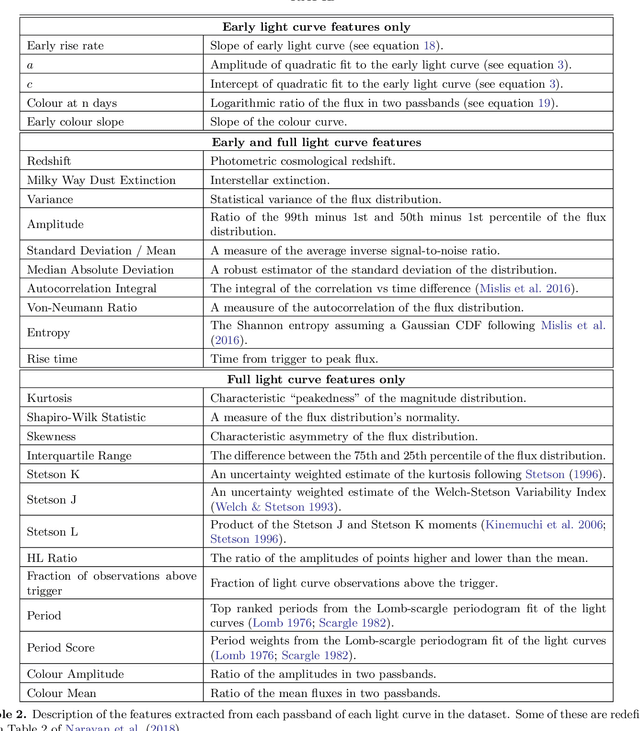
Abstract:We present RAPID (Real-time Automated Photometric IDentification), a novel time-series classification tool capable of automatically identifying transients from within a day of the initial alert, to the full lifetime of a light curve. Using a deep recurrent neural network with Gated Recurrent Units (GRUs), we present the first method specifically designed to provide early classifications of astronomical time-series data, typing 12 different transient classes. Our classifier can process light curves with any phase coverage, and it does not rely on deriving computationally expensive features from the data, making RAPID well-suited for processing the millions of alerts that ongoing and upcoming wide-field surveys such as the Zwicky Transient Facility (ZTF), and the Large Synoptic Survey Telescope (LSST) will produce. The classification accuracy improves over the lifetime of the transient as more photometric data becomes available, and across the 12 transient classes, we obtain an average area under the receiver operating characteristic curve of 0.95 and 0.98 at early and late epochs, respectively. We demonstrate RAPID's ability to effectively provide early classifications of transients from the ZTF data stream. We have made RAPID available as an open-source software package (https://astrorapid.readthedocs.io) for machine learning-based alert-brokers to use for the autonomous and quick classification of several thousand light curves within a few seconds.
Deep Learning for Multi-Messenger Astrophysics: A Gateway for Discovery in the Big Data Era
Feb 01, 2019Abstract:This report provides an overview of recent work that harnesses the Big Data Revolution and Large Scale Computing to address grand computational challenges in Multi-Messenger Astrophysics, with a particular emphasis on real-time discovery campaigns. Acknowledging the transdisciplinary nature of Multi-Messenger Astrophysics, this document has been prepared by members of the physics, astronomy, computer science, data science, software and cyberinfrastructure communities who attended the NSF-, DOE- and NVIDIA-funded "Deep Learning for Multi-Messenger Astrophysics: Real-time Discovery at Scale" workshop, hosted at the National Center for Supercomputing Applications, October 17-19, 2018. Highlights of this report include unanimous agreement that it is critical to accelerate the development and deployment of novel, signal-processing algorithms that use the synergy between artificial intelligence (AI) and high performance computing to maximize the potential for scientific discovery with Multi-Messenger Astrophysics. We discuss key aspects to realize this endeavor, namely (i) the design and exploitation of scalable and computationally efficient AI algorithms for Multi-Messenger Astrophysics; (ii) cyberinfrastructure requirements to numerically simulate astrophysical sources, and to process and interpret Multi-Messenger Astrophysics data; (iii) management of gravitational wave detections and triggers to enable electromagnetic and astro-particle follow-ups; (iv) a vision to harness future developments of machine and deep learning and cyberinfrastructure resources to cope with the scale of discovery in the Big Data Era; (v) and the need to build a community that brings domain experts together with data scientists on equal footing to maximize and accelerate discovery in the nascent field of Multi-Messenger Astrophysics.
Learning Hierarchical Object Maps Of Non-Stationary Environments with mobile robots
Dec 12, 2012



Abstract:Building models, or maps, of robot environments is a highly active research area; however, most existing techniques construct unstructured maps and assume static environments. In this paper, we present an algorithm for learning object models of non-stationary objects found in office-type environments. Our algorithm exploits the fact that many objects found in office environments look alike (e.g., chairs, recycling bins). It does so through a two-level hierarchical representation, which links individual objects with generic shape templates of object classes. We derive an approximate EM algorithm for learning shape parameters at both levels of the hierarchy, using local occupancy grid maps for representing shape. Additionally, we develop a Bayesian model selection algorithm that enables the robot to estimate the total number of objects and object templates in the environment. Experimental results using a real robot equipped with a laser range finder indicate that our approach performs well at learning object-based maps of simple office environments. The approach outperforms a previously developed non-hierarchical algorithm that models objects but lacks class templates.
 Add to Chrome
Add to Chrome Add to Firefox
Add to Firefox Add to Edge
Add to Edge